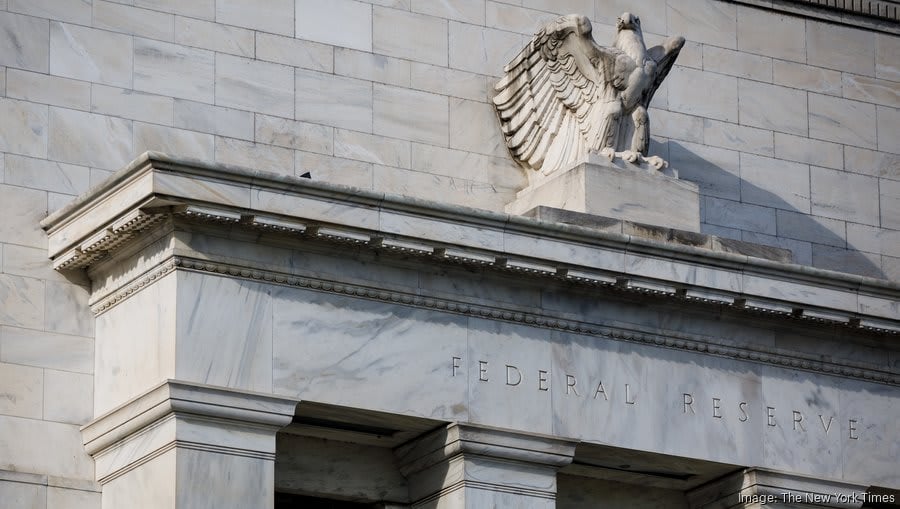The Federal Reserve’s decision to cut interest rates by half a percentage point on September 18, 2024, has brought a wave of optimism to the commercial real estate (CRE) market. After years of rising borrowing costs, industry leaders believe this move could signal the beginning of a long-awaited recovery. This aggressive rate cut is expected to unlock liquidity in commercial real estate financing, spur deals that were previously halted, and provide much-needed relief to developers, investors, and property owners across various sectors.
For an industry that has been grappling with the impacts of interest rate hikes since 2022, the recent cut feels like a turning point. Mark Rose, CEO of Avison Young, likened the rate cut to a long-overdue lifeline. “There’s nothing but goodness in what happened [last week],” said Rose, who foresees a market recovery by mid-2025. This recovery, however, won’t happen overnight. The commercial real estate market tends to experience a lag after rate cuts, but this latest development has the potential to gradually unlock pent-up demand for financing and deals by as early as Q4 2024.
The CRE Market’s Struggles with High Interest Rates
The Fed’s aggressive rate hikes starting in 2022, aimed at combating inflation, had a far-reaching impact on the commercial real estate market. CRE transactions, including property sales, refinancing, new debt issuance, and new developments, slowed dramatically as borrowing costs soared. For many developers and investors, the cost of financing made it nearly impossible to move forward with projects, and several deals fell through simply because they could no longer pencil out.
Property values in some sectors have seen a decline of 20% to 30% over the past 36 months due to the sharp rise in interest rates, according to Richard Barkham, global chief economist at CBRE. This has created significant distress for property owners and developers, particularly in sectors like office and multifamily properties, where occupancy and demand have been fluctuating.
The September 18 rate cut, larger than many experts had anticipated, is now widely seen as a positive step toward restoring confidence in the CRE market. By lowering borrowing costs, the Fed has provided a much-needed reprieve, offering the potential for renewed deal activity in the coming months.
Unlocking Liquidity and Financing Options
The key takeaway from this rate cut is its ability to unlock liquidity within the CRE capital markets. Many commercial real estate investors and developers had been holding back on deals due to the high cost of borrowing. Now, with lower rates, many of those same players are expected to return to the market, taking advantage of new financing options and more favorable lending conditions.
For property owners with loans nearing maturity or those needing to purchase new rate caps, the rate cut offers a significant financial benefit. Barry Lapides, a partner at Berger Singerman LLP, emphasized this by stating, “The interest-rate cut is Christmas for real estate investors and borrowers.” Investors and borrowers who had been struggling with high borrowing costs and expiring rate caps can now explore refinancing options at more favorable terms.
Lee Brodsky, CEO of BEB Capital, echoed these sentiments, stating that the rate cut provides an opportunity for commercial real estate investors and lenders to unlock new opportunities. For BEB Capital, which focuses on multifamily and industrial properties, this rate cut is the starting point of what could be a “once-in-a-generation buying opportunity.” Brodsky believes that this shift in interest rates will help alleviate inertia in the capital markets, allowing more transactions to be completed in the coming months.
What Sectors Will Benefit the Most?
While the overall CRE market stands to gain from lower interest rates, some sectors are better positioned to benefit than others. Multifamily and industrial properties, in particular, are expected to see the most significant positive impact. These sectors have been performing relatively well despite the challenging economic conditions, and the rate cut will likely provide an additional boost by making financing more accessible.
The multifamily sector, which has begun to see more distress in recent months, stands to gain from the rate cut, especially since many multifamily loans are floating-rate loans. As rates decline, these properties will become more financially viable for both developers and investors, potentially spurring new developments and acquisitions in the multifamily space.
Industrial properties have also remained strong throughout the recent economic challenges, buoyed by trends like e-commerce growth and near-shoring. The lower interest rates will further fuel demand for industrial space, as companies continue to expand their supply chain and logistics operations. Brodsky from BEB Capital believes this will be an area of significant growth as businesses seek more space to accommodate their expanding operations.
On the other hand, office properties, particularly Class B and C office spaces in struggling markets, may not experience the same level of benefit. Lapides pointed out that while the rate cut is helpful, a 50-basis-point drop is not enough to turn around the fortunes of underperforming office assets, especially those facing issues such as low occupancy rates, outdated infrastructure, and high operating costs.
Mark Rose from Avison Young agrees, noting that for office properties, especially those with high vacancy rates or aging infrastructure, the challenges go beyond borrowing costs. “If a Class B building hasn’t been renovated or retrofitted, has an occupancy rate of 60% or 70%, is facing higher insurance and tax costs, and has debt coming due, a 50-basis-point rate cut will not solve those challenges,” Rose explained. The recovery for the office sector may be much slower, as these properties continue to grapple with higher operational expenses and shifting demand.
A Gradual Recovery for CRE
While the Fed’s recent rate cut is widely seen as a positive development, it won’t immediately solve all of the commercial real estate industry’s problems. CRE recoveries tend to lag behind other sectors, and challenges such as loan delinquencies and distressed assets will continue to weigh on the market in the short term.
Data from S&P Global Intelligence shows that the average interest rate on commercial real estate loans originated in 2024 is 6.2%, compared to 4.3% for loans maturing this year. This nearly 200-basis-point difference means that, while the 50-basis-point rate cut is helpful, it won’t bridge the gap for many borrowers, particularly those in highly leveraged positions. Further rate cuts may be necessary to truly rescue some distressed assets.
Nonetheless, the general sentiment in the CRE market is that the worst may be behind us. Richard Barkham of CBRE predicts further rate cuts of 25 basis points in both November and December, followed by an additional 125 basis points in 2025. This could lead to a significant rebound in CRE capital markets, with capitalization rates expected to fall over the next 12 months. By 2025, the industry could be looking at a much brighter horizon, with renewed investor confidence and a return to healthy transaction volumes.
Looking Ahead: Opportunities and Risks
The future of commercial real estate will depend heavily on how quickly the market can adjust to these lower rates and how much further the Federal Reserve is willing to cut. For sectors like multifamily and industrial, the outlook is optimistic, with strong demand and easier financing options paving the way for growth. However, for sectors like office, the road to recovery may be much longer.
As always, the CRE market will continue to face external risks, including broader economic trends and regulatory challenges. But for now, the rate cut offers a much-needed boost to an industry that has been struggling with high borrowing costs and limited liquidity. Investors, developers, and property owners will be closely watching the Fed’s next moves, hopeful that this is just the beginning of a sustained recovery for commercial real estate.




